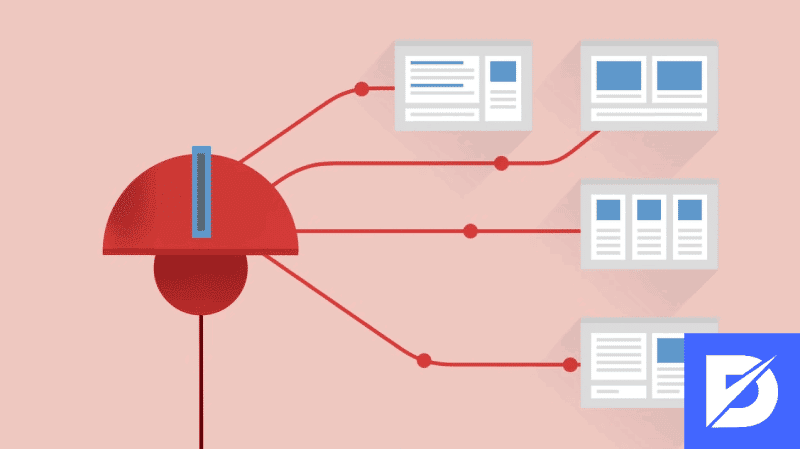Ad Network is an essential tool in ever-changing online advertising. That is because ads need reach and engagement, both of which require optimization. Advertising in ad network is mainly related to online media; it uses websites, social media streams, e-mails, and blogs. An ad network is a practical way of advertising which takes place online. This kind of advertising refers to platforms that manage ad inventory for publishers and advertisers. Advertisers that create ad campaigns want to find a place for their ads and reach target customers. Consequently, Ad networks offer services that make it easy to match the needs of publishers and advertisers. That consists of several main steps. Firstly, Ad networks gather inventory from publishers and then deliver it to an advertiser who looks for a place to display their ads.
Advertising networks created for improved facilities through services will help publishers and advertisers that have different purposes to use ad networks. However, ad networks can provide a various bunch of forms and models. Some ad networks also allow advertisers to manage their campaigns. Other ad networks adopt a consultative approach to run the campaign in optimal requirements. Therefore, it needs consideration to find the right ad network out of many. To see what works for your business, you should consider the network they focus on and the services they offer.
Why We Use Ad Networks
Ad networks have always been an inevitable part of the online advertising system. It is a very known tool in traditional advertising as well as in digital advertising as of now. Still, advertising on ad networks brings sources and demands together and benefits both. It is like having a supply and demand perspective in advertising.
Publishers
Publishers make less money if they sell their website space, but they still possibly need to use ad networks. Even publishers profit more with the direct sale, but they would have unsold inventory. Ad networks buy unsold inventory from publishers to find interested advertisers.
Advertisers
Advertisers use ad networks as they want to find the best inventories for their campaigns.
Therefore, for both publishers and advertisers, ad-network platforms provide outstanding facilities. It creates a convenient way to find increasing inventory demand and ad revenues in digital marketing. In addition, it is demanded on a technical level to offer inventories and monitor campaigns. It facilitates transactions and also with payments.

How Ad Network Works
The ad network works like collecting unsold ad inventory from various publishers to get advertisers with lower sales than the direct sale from publishers. These inventories refer to the remnant.
Some ad networks gather top-tier publishers to offer advertisers great deals at premium prices. It is a more strategic approach than selling unsold inventories. However, this makes ads ensure placements, and it is valuation.
Publishers that seek to sell their unsold ad spaces or inventories are reach out by Ad networks. Also, Ad network works for gathering all of this from publishers, then it packages them and sells them to advertisers.
Ad Network or Ad Server
Since the ad network and ad servers are similar, they can easily be confused. Let’s review some of the basics to distinguish between an ad network and an ad server.
An ad server is widely used to manage, run and make reports about ongoing advertisements. It is also a part of the ad network that uses this advertising technology.
● First-party ad servers publishers can manage the ad space on their websites. It means operating deals to advertisers, selling unsold inventories to ad networks, and reviewing the ad performance.
● Third-party ad servers allow keeping advertisers’ ads in-store. It shows campaign performance across different publishers and reports them.
Other than an ad server, the ad network is more about a process that is mainly about managing the purchases between publishers and advertisers.
● Ad networks deliver online advertising through an ad server. Ad servers and ad networks have different purposes. That leads advertisers to have different methods of tracking and reporting provisions. The ad server delivers the ad by an ad network. Ad server helps to integrate ads for the landing page.
● Ad network allows advertisers to get impressions of inventories provided by the publishers. It uses an auction basis. Ad networks are used either by advertisers through the campaign management panel or third-party ad servers to set up pixels.

Mobile and Video Ad Networks
Ad networks contain desktop, mobile, and video advertising, all sorts of digital inventory. Most of the ad networks support different ad formats and platforms. There are ad networks that offer particular types of inventory and ads.
Mobile ad networks
They focus on traffic driven from mobile web, mobile apps and work with other forms of ads. Mobile ad networks can also support different kinds of ads with specific as video.
Video ad networks
They operate ad inventory associated with the video.

The Benefits of Ad Network
Advertisers should choose the best ad network to work with and help their campaigns.
Advertising networks facilitate many things for publishers and advertisers. Ad networks offer varied kinds of services that would benefit managing online advertising campaigns. It will help the advertisers to save time, and they would no longer need to offer different orders to each publisher for each campaign. Advertisers can compare and buy more inventories and centralize the reporting for campaigns. Then it is easy to measure the reach of the campaign. It is effortless to use for advertisers. They can target specific customers to their campaign with little effort. The advertising network also offers flexible payments, which even saves on expenses.
Publishers can sell inventories that are unsold with direct deals. It is a grand opportunity to serve impressions to advertisers and save from wasting inventories. Ad networks are a reliable way to sell inventory for publishers, although the revenue is less than with direct sales.
Disadvantages
Many advertisers use ad networks due to their effectiveness and affordability to reach the target customers. However, ad network advertising has some downsides as well. The disadvantage is limited control over the placement of the ads in nature. Thus, the ad campaign could display on an improper website or an app with irrelevant context. Ill-intentioned people can buy inventory and distribute the malware due to the ad network without covering security issues.

Different Types of Ad Networks
Ad network advertising is built on different purposes to focus on advertising. Some ad networks organize the types of content they want to work with. Another network can create vertical channels to reach audiences who are interested in them. The other ad networks may offer lower prices but are not clear where the advertisers’ ads display. Even ad network works as a basis to get a month of impressions to advertisers it also can follow the different approaches as shown below:
Vertical Ad Networks
Specific ad networks look dedicated to specific networks which will attract related advertisers.
Premium Ad Networks
Premium ad networks seek out popular publishers and offer these inventories to advertisers.
Specialized Ad Networks
Specialized ad networks focus on specific inventories.
Performance and Affiliate Ad Networks
An affiliate network refers to companies that provide compatible services and pass leads to each other.
It offers cross-promotional deals and payments for sales based on its chosen services.
Some Ad Network Examples

● Google AdSense
Google AdSense works ad on a website based on website content and its visitors.
AdSense displays Google Ads on your website. Google pays based on clicks on ads or ad impressions to publishers.
● PopAds
PopAds is one of the highest and quickest paying ad networks. They guaranteed to monetize web traffic with fast, secure, and high-quality ads.
● Click Adu
Click Adu is an advertising network for web and mobile advertising to maximize revenue experience for publishers and advertisers. Click Adu offers innovative ad formats such as skim, instant text messages, pop-under ads. Advertisers can choose from self-service or fully managed ad campaigns.
● Adcash
Adcash is a self-serving ad network platform for publishers and advertisers. It runs many campaigns for advertisers worldwide. Adcash promotes publishers to control web traffic and advertisers to reach their target audiences. They have different ad formats such as pop-unders, banners, and push notifications. Adcash offers advertisers technical support from account managers.
● Propel Media
Propel media uses real-time intended technology to find the target audience via text links and display ads for advertisers. It is one of the best advertising platforms for cost-per-view (CPV). Propel media interface is easy-to-use for optimization and visual analytics. They aim to boost traffic by driving engagement with their innovative ad products.

Price in Ad Advertising
Ad networks work in different pricing options. These pricing models are based on fixed-rate as a specific amount of impressions, clicks, or auction-based.
Cost-per-click (CPC)
Advertisers pay for every click that their ads get. Pricing is mostly determined by the advertisers bidding for the maximum amount they pay on a single click.
Cost-per-mille (CPM)
Advertisers pay for every specific amount of impressions they get. In CPM, ads will display on customers, regardless of clicks.
Cost-per-acquisition (CPA)
Cost-per-acquisition assures payments for customers’ specific actions.
Final Thoughts
In this article, you can find what an ad network is, reasons to use it, advantages and disadvantages, and some examples of ad networks. We hope this will help almost all you need to know about advertising networks.
Frequently Asked Questions About
An ad network is one of the significant elements of advertising. It is a technology platform that various services as a broker to serve publishers and advertisers.
Ad network collects unsold inventory from the publisher and sells it to advertisers. Ad network platforms manage the process of targeting, reporting, and optimization in the ad campaign.
Ad networks are an essential element of online advertising. They work as the intermediary between publishers and advertisers. Advertising network easy to use and with its technical and commercial facilities.
Here are some examples of ad networks: Google AdSense, PopAds, Click Adu, Adcash, Propel Media
There are many types of ad networks, and let’s review some of the well-known ones: vertical ads networks, premium ad networks, performance, and affiliate networks.





No comments to show.